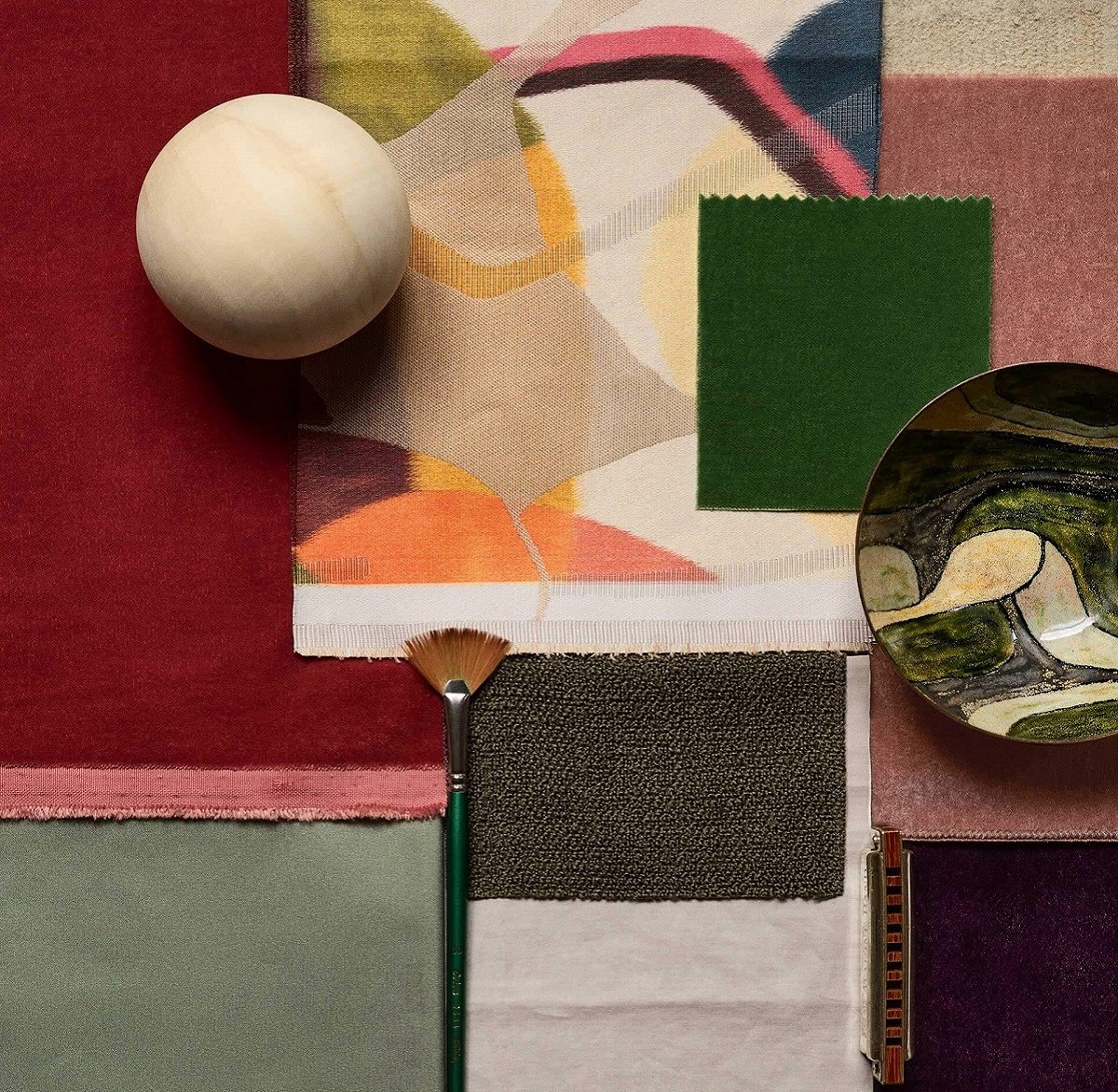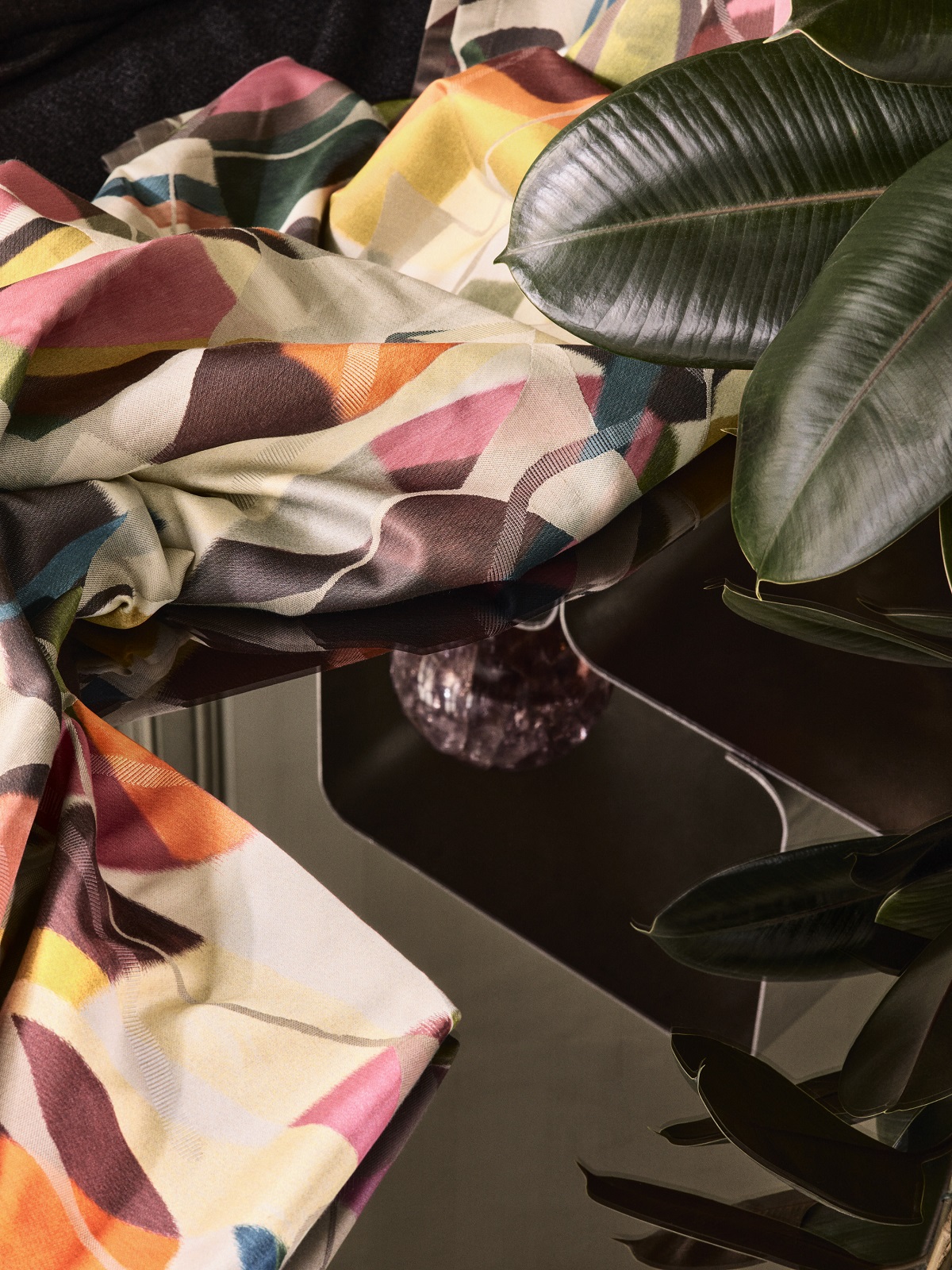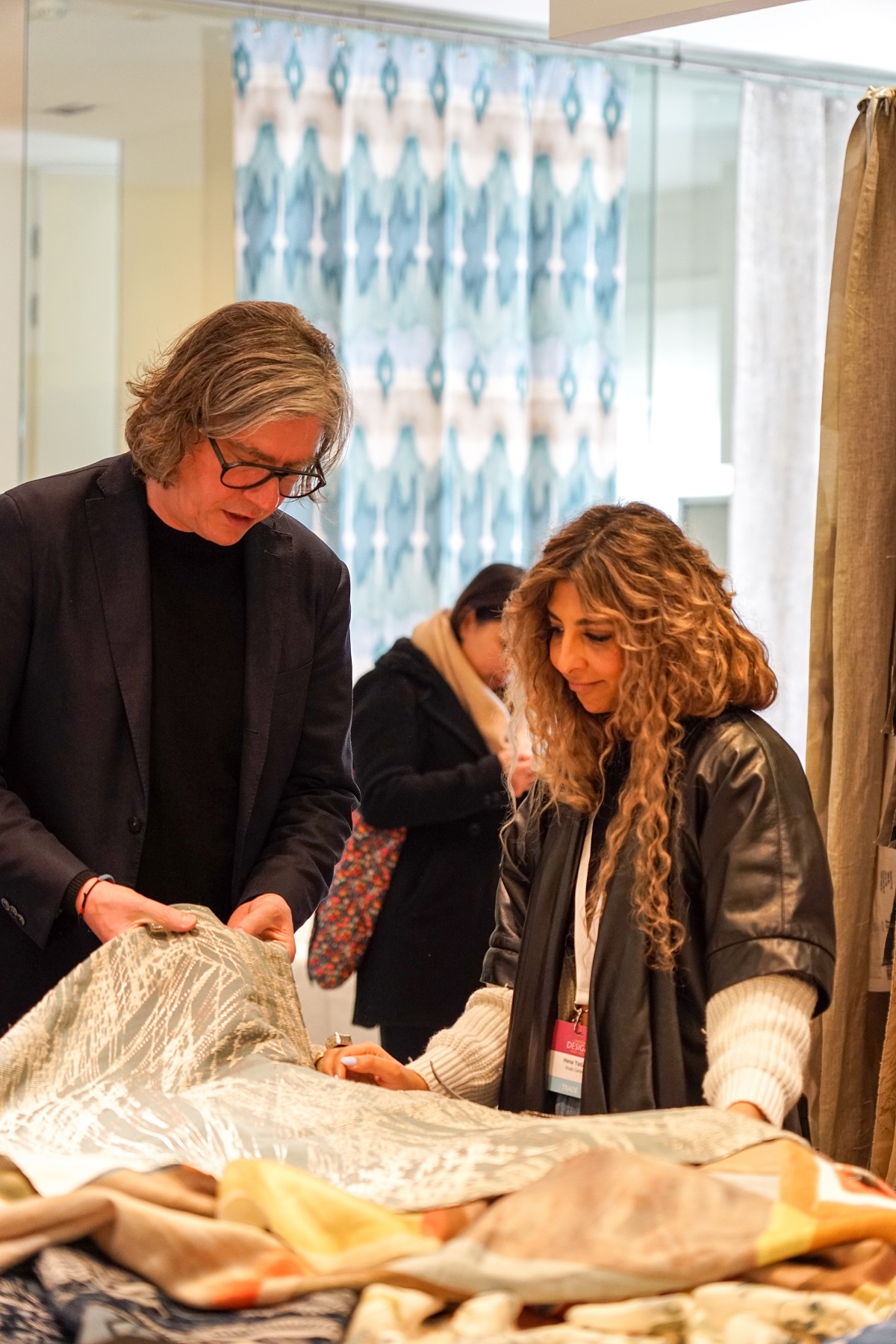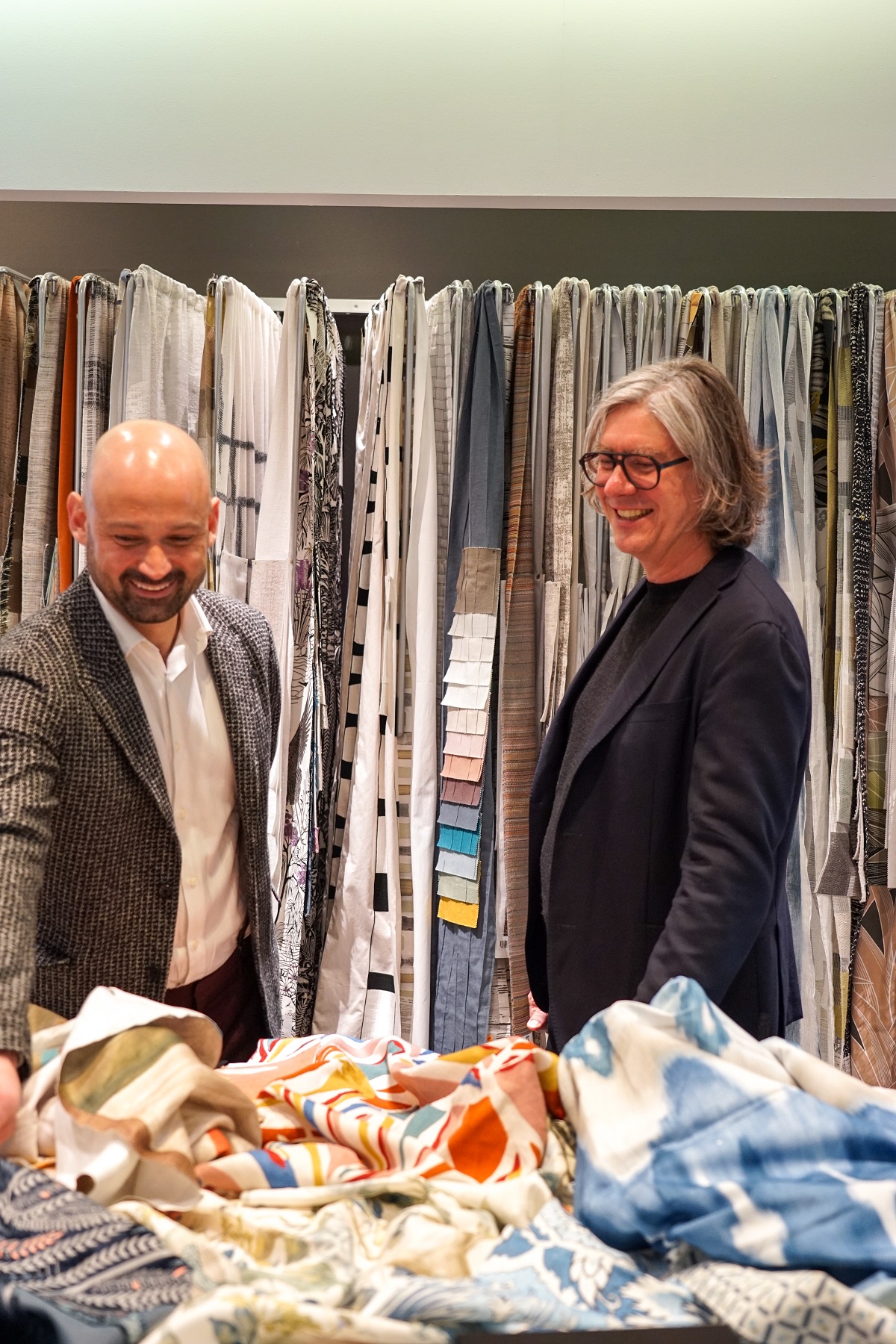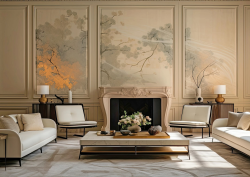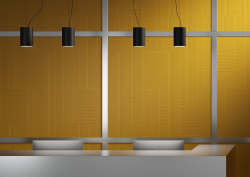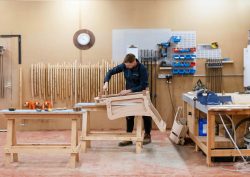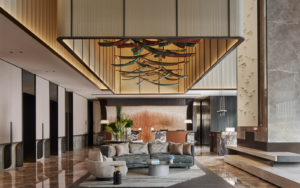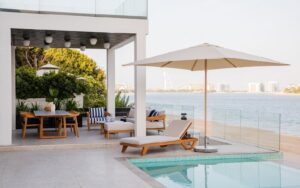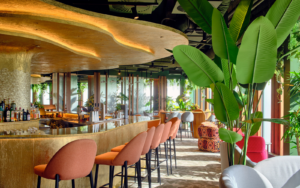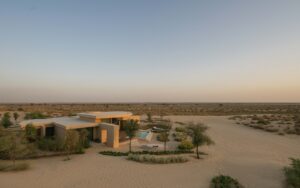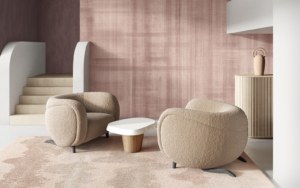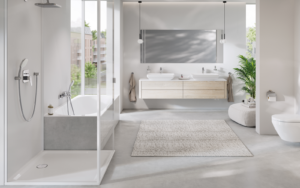London Design Week 2022 saw the launch of new brands and collections by Zimmer + Rohde. To celebrate the event, and new patterns, Editor Hamish Kilburn hosted an exclusive panel discussion with leading interior designers in the showroom for a hands-on conversation on all things textile…
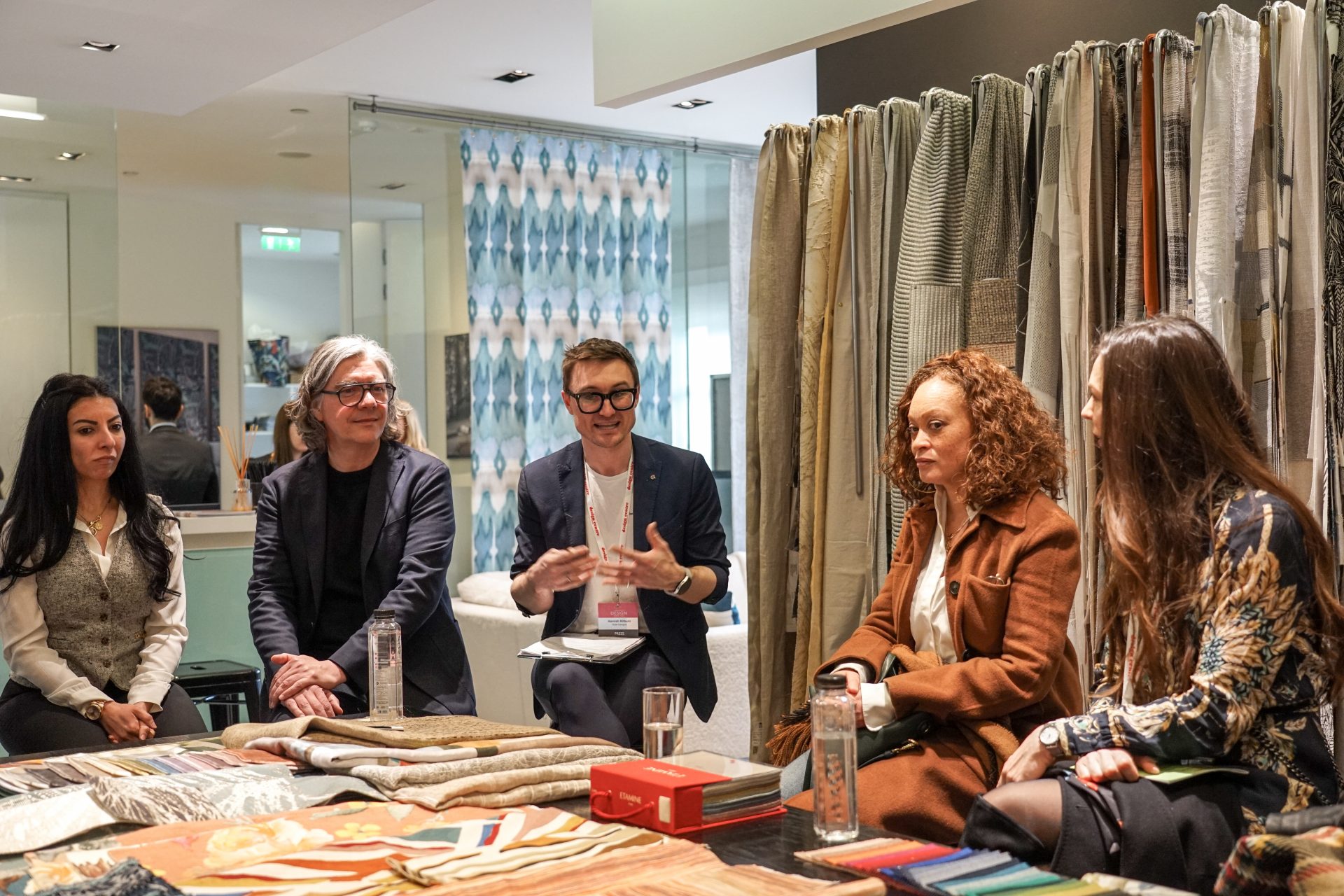
Fabrics and textiles showcase trends in a very direct and tactile way. With this in mind, Hotel Designs in association with Zimmer + Rohde, used the opportunity of London Design Week’s live action to take a closer look at the weft, weaves, colours and patterns on show, and to discuss, with a panel of leading interior designers, how fabrics can be used to introduce notes of nature and biophilic design into our interior spaces.
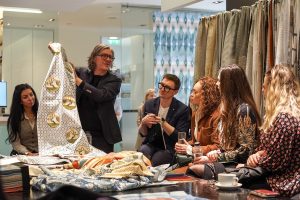
Image credit: Zimmer + Rohde
On the panel, in front of an exclusive audience at the Zimmer + Rohde showroom in Design Centre Chelsea Harbour were: Marie Soliman, Co-founder, Bergman Design House; Fiona Thompson, Principal, Richmond International; Jeremy Grove, Founder, Sibley Grove; Alan McVitty, Founder, M Studio London; Stefan Gabel, Creative Director, Zimmer + Rohde.
Stefan Gabel, Creative Director at Zimmer + Rohde, started the conversation, chaired by Editor Hamish Kilburn, by introducing the SS22 collections and brands that became the catalyst of the discussion, debate and deep exploration of biophilic design in fabric.
Questions of sustainability and connection to nature were clear throughout, from inspiration right through to the detailed design process. Focussing on the new Sketchbook Collection from Zimmer + Rohde, Coup de Soleil by Etamine and Garden Club by Travers, Gabel identified the touchpoints of each brand.“Talking about the influence of nature today, these new fabrics all explore nature in unique ways,” he said. “The Coup de Soleil collection by Etamine focusses on natural materials, such as linen and recycled wool addressing questions of sustainability throughout. The signature flower prints and designs are a part of this and reflect nature more directly, while for the plains it is about sourcing organic and locally produced fabrics.
“Garden Club by Travers connects us to a more cultivated nature, with its combination of warm colours and handcrafted production.” The presentation ended with the Sketchbook collection, which as described by Gabel, is all about “crafted design, intuitive working and the imperfection of the sketch, the handmade.”
Kilburn continued the discussion by explaining how fabrics can be a vehicle – a design tool – to take biophilic design beyond surface decoration and to dig deeper into the textures and colours of nature. “It can also be an opportunity to look more closely into questions around sustainability,” he said. “Discussing biophilic design should be about connecting all these points, while understanding that there is more than one method to make a connection or reference with nature and the natural world.”
With this in mind, the panel of designers were asked how fabrics can be used to deepen a design narrative and make that connection to the outdoors and nature. Responding to this question and kicking off the debate, Alan Mcvitty, Founder, M Studio London, discussed the role of fabrics and nature in the design process. “Fabrics form a large part of what we do in any interior, and it’s not uncommon for a scheme to be inspired by a particular fabric design,” he explained. “Within our designs, nature is usually a great source of inspiration.”
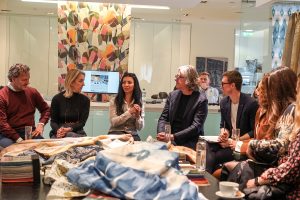
Image credit: Zimmer+Rohde
Interior designers have a range of design tools that they access – whether it be colour, pattern, lighting or materials. Some may emphasise texture over colour, while for others, colour saturation is the signature. The process is, to an extent subjective. But what is clear is that through using fabric meaningfully, designers can authentically compliment, and add layers, to the overall design scheme. This gives emphasis to the feeling that they are trying to evoke. “Ultimately design is about what makes people feel good in a space and there is a whole range of tools designers use to do that,” said Fiona Thompson, Principal, Richmond International. “But fabric, texture and textiles are definitely key to creating an authentic biophilic design narrative.”
Biophilic design is not something new – it has always been around in some shape or form and is something that has been an innate part of the design process long before it was a box to tick. However, it is undisputedly a design concept that is coming back into design briefs. The connection between nature and wellness is more widely understood as an essential component to how we respond to our environment. It is a concept that is most visible in textiles.
When looking at how to introduce biophilic notes and layers to interiors, the question was raised: is biophilic design about the end effect. Or do we need to look at how something is made to answer the question of whether the materials contribute to the biophilic concept? “We work on a concept of ‘holistic beauty’ in design,” explained Jeremy Grove, Founder, Sibley Grove. “Which means that a fabric is only beautiful if all aspects – from inspiration through to production through to final product – are ‘beautiful’ with the planet’s best interests at heart.”
These questions bring to the surface the issue of sustainability. What was clear from the discussion around the new collections, was a common thread that addressed concerns around conscious design. “Nature is not the only inspiration driving these innovations,” added Gabel. “Materials are just as important in this discussion, as is the production process,”
In the SS22 collections from the brands that are under Zimmer + Rohde, production and provenance is made clear. From the use of organic linen to distances covered by the different elements of production; everything has been considered. These conversations are happening more between supplier and designer, which in turn sparks the discussions between designer and client. “There is a mindshift across the board when it comes to questions of sustainability,” added McVitty. “As designers, it is important that we play our part in terms of the materials we specify and in the conversations we have with suppliers when looking for products that will benefit the planet as a whole”
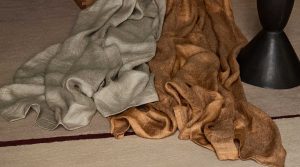
Image credit: Zimmer+Rohde
Longevity is another aspect of sustainable design. In this continuous loop of new designs and trends, re-imagining and refurbishment are an important part of interior design for the Hospitality sector. Using fabrics to refresh an interior space, can be the most cost-effective and least damaging way of creating a whole new look while maintaining the existing elements of the design. While the fabric may have a shorter design life, they can enable a designer to extend the relevance of a design. Longevity, circularity, these are all elements of the same sustainable conversation. “Looking at sustainability in the context of longevity can be difficult when it comes to fabrics” said Grove.” Replacing the fabrics is often an intrinsic part of how we work, as it can significantly increase the longevity of a project.”
Picking up on design trends and the idea of fabric as art outside the frame, like art, fabric design is subjective. While some designers have a signature palette, others might be more comfortable with pattern and texture. What seems to be key when looking at new fabric collections and trends is that there is in fact no hard and fast rule. Colour and pattern in hotel design is possibly a bit stronger now than it was a few years ago. Design in the hospitality arena has moved away from brand identity to individuality and personality. It is now about immersion and telling a story, and fabric has a vital role to play in that process and is one of the most visual contributions to that narrative. “People respond to how a design makes them feel not about what they see,” confirmed Marie Soliman, Co-Founder, Bergman Design House. “Fabric is not always just part of the design, sometimes it can be the design, full stop.”
How you then use fabric to introduce nature in a design scheme will depend on where you are and what that nature is. From a desert to rainforest, there are many different nuances and textures that make introducing nature and biophilic design an open-ended palette. Nature can be invigorating, or it can be all about a spa-like serenity. It can be harsh; it can be comforting. All these different elements reference nature in opposing ways, and fabric is consistently an integral tool in any designer’s repertoire to strengthen these references. “Clients are looking for a design that is representative of where a project is based, its location, its climate,” said Thompson. “Whether colourful or neutral, fabrics contribute to that story.”
“A new collection needs to be able to surprise with new looks and new materials, even when inspiration has been taken from the past.” – Stefan Gabel, Creative Director, Zimmer + Rohde.
Ending the discussion on a forward-looking note, Kilburn asked Gabel to give us his insight on upcoming trends and inspirations in the textile world. “Right now, there is a lot of focus on rustic materials and textures, weaves and artisanal crafts,” he said. “Moving forward, it feels like there might be a shift back to shinier, perhaps more glamourous, surfaces such as taffeta, for example. But within that, a new collection needs to be able to surprise with new looks and new materials, even when inspiration has been taken from the past.”
While we immerse ourselves in the textures and colours available to us today, there is a wonderful sense of anticipation waiting to see what tomorrow’s points of inspiration are going to be – and indeed where they will emerge from. With conversations around sustainability and biophilic design getting louder, it will be interesting to see how these feed into new fabric collections and then design more broadly.
Zimmer + Rohde is one of our Recommended Suppliers and regularly features in our Supplier News section of the website. If you are interested in becoming one of our Recommended Suppliers, please email Katy Phillips.
Main image credit: Zimmer + Rohde



